Characteristics
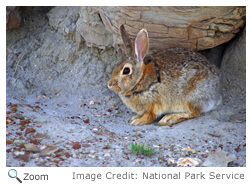 The desert cottontail has brown-gray fur above and lighter fur on its undersides. It has big eyes, puffy, round tails and long, wide ears with little fur in them. The female desert cottontail is usually a little larger than the male. The desert cottontail has brown-gray fur above and lighter fur on its undersides. It has big eyes, puffy, round tails and long, wide ears with little fur in them. The female desert cottontail is usually a little larger than the male.
Range
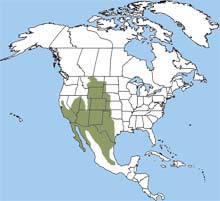 The desert cottontail can be found in the southwest from California east to Texas and from northern Montana south to Mexico. The desert cottontail can be found in the southwest from California east to Texas and from northern Montana south to Mexico.
Habitat
The desert cottontail can be found in woodlands, grasslands, creosote brush and desert areas.
Diet
The desert cottontail eats grasses, cacti, bark and twigs and mesquite. |
|
Reproduction
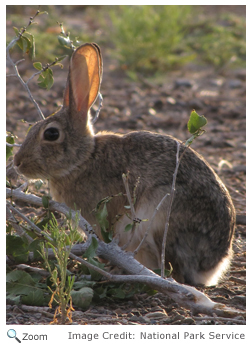 Mating season runs from January to late summer. The female makes a nest by digging a shallow hole in the ground and lining it with fur and grass. A month after mating, she gives birth to one to six babies. The babies are born naked and with their eyes closed. They leave the nest when they are two weeks old. They stay with their mother for another three weeks. They will be ready to mate when they are about three months old. Females usually have two to four litters a year. Some females may have as many as six litters a year.
Behavior
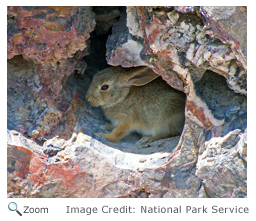 The desert cottontail is most active in the early morning and in the evening. It spends the hottest part of the day under cover. Sometimes the desert cottontail climbs sloping trees and tree stumps to sit and keep watch for predators and other dangers. The desert cottontail is most active in the early morning and in the evening. It spends the hottest part of the day under cover. Sometimes the desert cottontail climbs sloping trees and tree stumps to sit and keep watch for predators and other dangers.
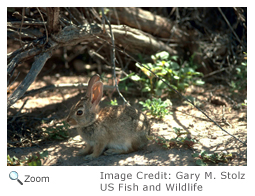 The desert cottontail does not build its own den, although it may scratch a depression under a bush or other vegetation. Sometimes it will rest in the burrow of another animal. The desert cottontail can also swim and runs at speeds of up to fifteen miles an hour. The desert cottontail does not build its own den, although it may scratch a depression under a bush or other vegetation. Sometimes it will rest in the burrow of another animal. The desert cottontail can also swim and runs at speeds of up to fifteen miles an hour.
|